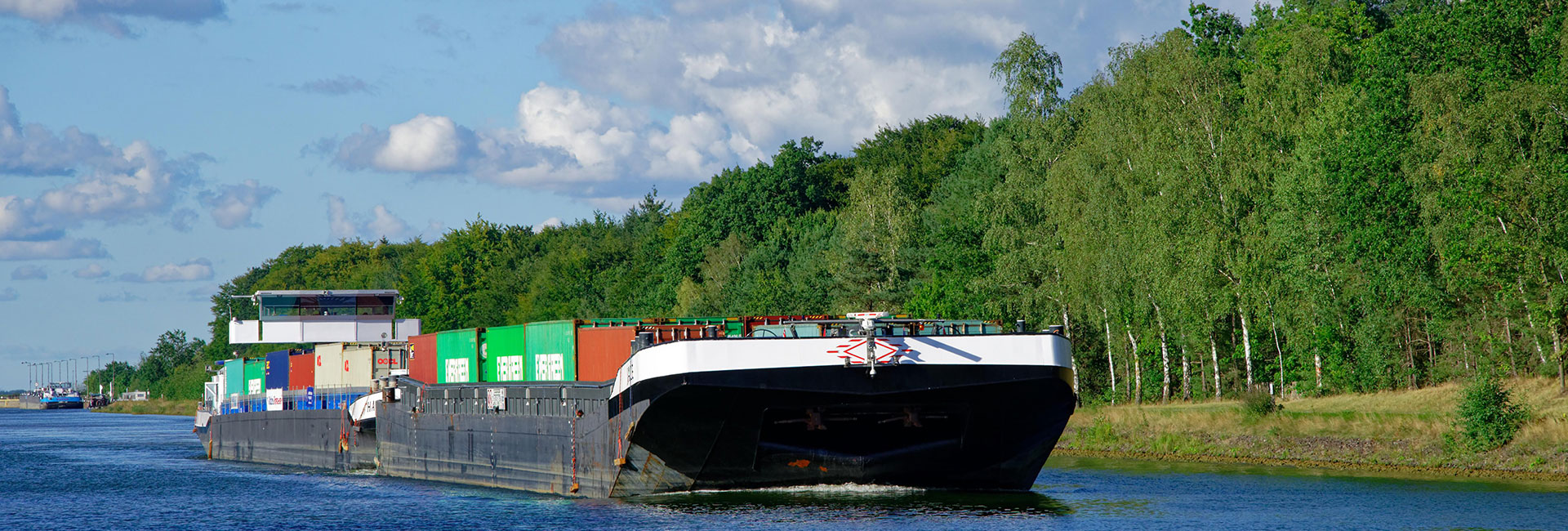
The inland waterway craft is seen as an environment-friendly means of transport, and not solely for bulk cargoes. Shipping companies are increasingly frequently offering container services. Not only for long tours, shippers’ logistics departments are including this means of transport in their calculations for numerous transport chains. On shorter routes too, in many cases it has advantages over trucking. One of these is obvious: Using an inland waterway craft, about four extra tons of cargo can be stuffed into the box. This makes the entire transport chain more economical. Another ‘plus’ is reliability. While an inland waterway craft is not as fast as a truck, there are virtually no traffic jams on waterways, enabling shipping companies to meet customer requirements more rapidly. “Our liner services remain extremely flexible. We do not need to abide rigidly by sailing times. Along with our customers, we therefore always seek to find a solution,” says Rene Oloff, manager of Deutsche Binnenreederei’s Hamburg branch.
Deutsche Binnenreederei was the first company to start shifting containers on inland waterway vessels. Today it is among the leaders in transporting boxes by inland waterway craft to and from Hamburg. On average, over 90,000 TEU a year travel that way. “Our first line ran via the Elbe to Riesa. Many other ports are now involved. Via the Elbe Lateral Canal and the Mittellandkanal, we operate to Braunschweig via Hanover as far as Minden. On the other side, we also serve Fallersleben,” explains Oloff. A variety of cargoes lie in the containers. The most frequent loads consist of consumer goods, wood or furniture, natural stone, and automotive/chemical products, including hazardous cargoes. Units in inland waterway shipping are of constantly growing size. Deutsche Binnenreederei, for instance, operates one push-tow with a capacity of up to 176 TEU. Two or three pusher craft are invariably deployed on shifting loaded push lighters to or from the Port of Hamburg. For loading and discharging the boxes, as a rule calls are made at all the Hamburg terminals. In

Foundation of VEB – state-owned – DSU German Shipping and Cargo Handling Centre. This consisted of four independent operations in Berlin, Magdeburg and Stralsund and Dresden, where only passenger craft were operated.
After reunification, Deutsche Binnenreederei came under the Treuhand. In 2001 this became a public limited company. A further change occurred six years later: Deutsche Binnenreederei was acquired by Odratrans Group of Poland.
Rhenus Group acquires Deutsche Binnenreederei and continues to run it. Between the Port of Hamburg and various ports on the Elbe, Elbe Lateral Canal and Mittellandkanal, Deutsche Binnenreederei operations involve two motor vessels, five or six push-tows and one mega push-tow.